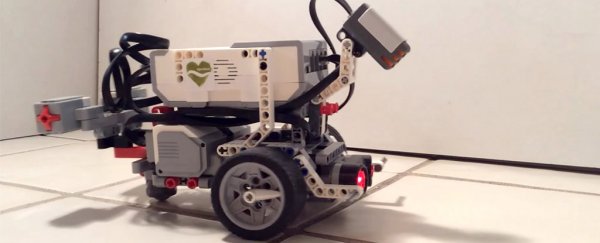The brain is really little more than a collection of electrical signals. If we can learn to catalogue those then, in theory, you could upload someone's mind into a computer, allowing them to live forever as a digital form of consciousness, just like in the Johnny Depp film Transcendence.
But it's not just science fiction. Sure, scientists aren't anywhere near close to achieving such a feat with humans (and even if they could, the ethics would be pretty fraught), but there's few better examples than the time an international team of researchers managed to do just that with the roundworm Caenorhabditis elegans.
C. elegans is a little nematodes that have been extensively studied by scientists - we know all their genes and their nervous system has been analysed many times.
So, in 2014, a collective called the OpenWorm project mapped all the connections between the worm's 302 neurons and managed to simulate them in software, as Marissa Fessenden reports for the Smithsonian.
The ultimate goal of the project was to completely replicate C. elegans as a virtual organism. But as an amazing starting point, they managed to simulate its brain, and then they uploaded that into a simple Lego robot.
This Lego robot has all the equivalent limited body parts that C. elegans has - a sonar sensor that acts as a nose, and motors that replace the worm's motor neurons on each side of its body.
Amazingly, without any instruction being programmed into the robot, the C. elegans virtual brain controlled and moved the Lego robot.
Lucy Black wrote for I Programmer:
"It is claimed that the robot behaved in ways that are similar to observed C. elegans. Stimulation of the nose stopped forward motion. Touching the anterior and posterior touch sensors made the robot move forward and back accordingly. Stimulating the food sensor made the robot move forward."
This video of the Lego-worm-robot was released by Timothy Busbice, a founder of OpenWorm, showing it moving, stopping and then travelling backwards.

Of course, the brain simulation still isn't exact. For one, the researchers had to simplify the process that triggers an artificial neuron to fire. But the fact that this robot can move, can stop before it bumps into something and reverse using nothing more than a network of connections that mimic a worm's brain, is pretty incredible.
The OpenWorm project continues to this day, extending itself to make simulations and visualisations available through your web browser.
An iOS app has, unfortunately, faded away in recent times (if you can help fix it, open source projects are always looking for expertise), but the larger mission continues optimise and, in its way, help the worm evolve into a fascinating digital lifeform.
Scientists are now working out how to map all the connections in the human brain - something called the connectome. Even if we're not uploading our brains into computers, just being able to simulate a human brain would help to revolutionise artificial intelligence and computers.
And if we could one day get to the point where we can somehow get our minds to escape the vulnerable fleshy meat sacks that currently house them, the opportunities would, quite literally, be mind-blowing.
Source: Smithsonian, I Programmer
